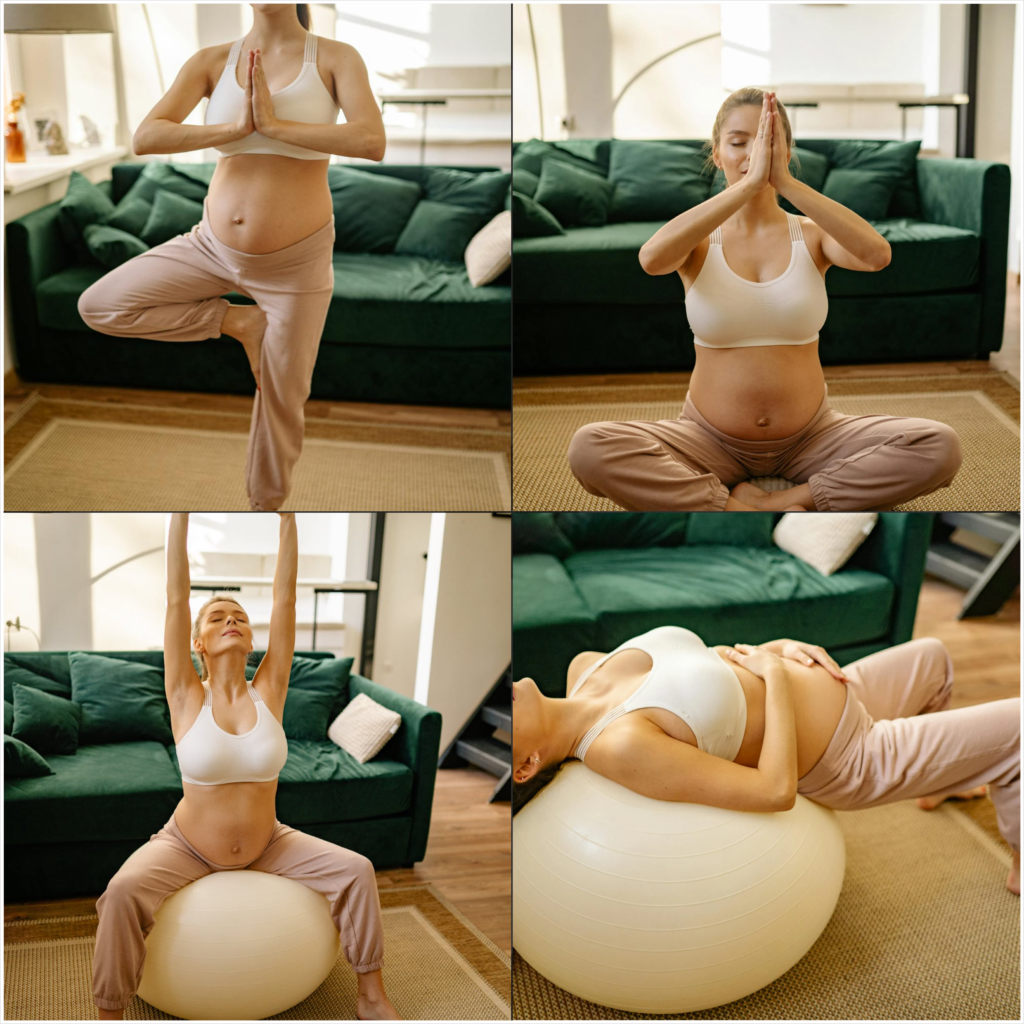Top 10 Yoga Postures for Pregnant Women
Prenatal yoga can improve flexibility, strength, and relaxation for pregnant women. Safe postures include Cat-Cow, Child’s Pose, and Warrior II.
Yoga is an excellent way for pregnant women to stay active and healthy. It helps in managing stress, alleviating back pain, and preparing the body for childbirth. Specific yoga postures can enhance flexibility, build strength, and promote relaxation, making the pregnancy journey smoother.
Cat-Cow stretches the spine, Child’s Pose provides gentle relaxation, and Warrior II builds leg strength. These poses are safe and beneficial when practiced with proper guidance. Always consult a healthcare provider before beginning any new exercise routine during pregnancy. Regular practice can contribute to a healthier pregnancy and a smoother delivery experience. Let’s delve together how to nurture your body and baby through safe but effective Yoga Postures For Pregnant Women.
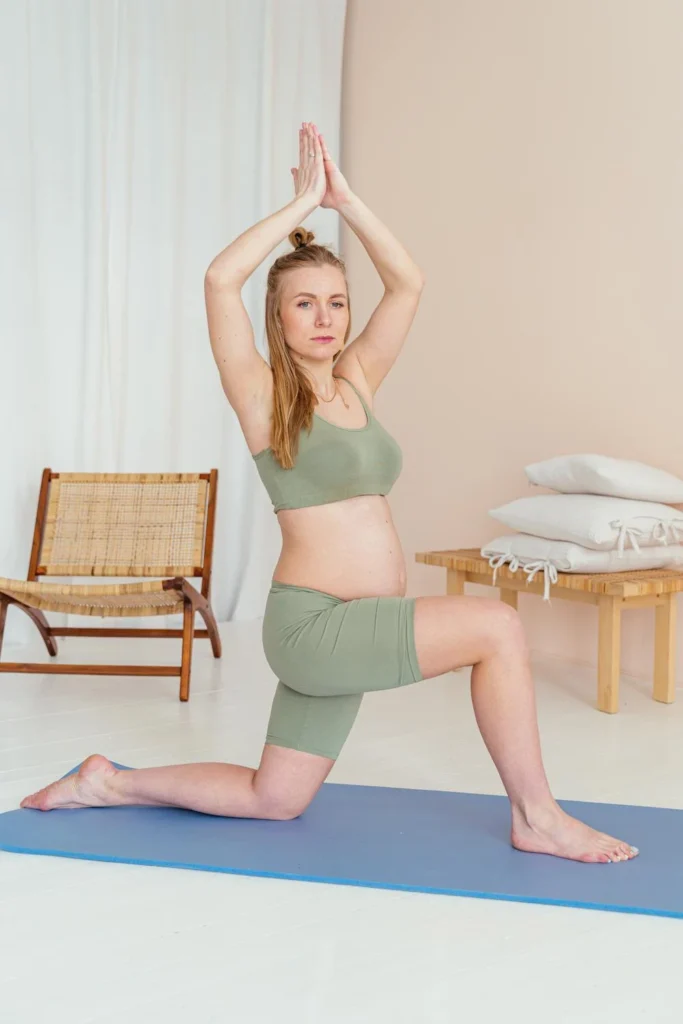
Benefits Of Yoga During Pregnancy
Yoga postures for pregnant women offer numerous benefits that contribute to both physical and mental well-being. Practicing yoga during pregnancy can help expectant mothers navigate the changes in their bodies and minds. This ancient practice provides gentle stretches, strengthens muscles, and enhances flexibility, while also promoting relaxation and mental clarity.
Physical Health
Yoga offers substantial physical health benefits for pregnant women. It helps in easing common pregnancy discomforts and prepares the body for labor. Here are some key physical benefits:
- Improved Flexibility: Yoga stretches help maintain and improve flexibility, which is crucial as the body changes.
- Strengthened Muscles: Specific yoga postures strengthen the muscles needed for childbirth.
- Reduced Back Pain: Yoga can alleviate back pain by improving posture and strengthening the back muscles.
- Better Circulation: Improved blood flow helps reduce swelling in the ankles, feet, and hands.
- Enhanced Balance: Yoga helps maintain balance as the center of gravity shifts during pregnancy.
Here’s a table summarizing the physical benefits of yoga for pregnant women:
| Benefit | Description |
|---|---|
| Improved Flexibility | Maintains and enhances body flexibility |
| Strengthened Muscles | Targets muscles needed for childbirth |
| Reduced Back Pain | Alleviates discomfort by improving posture |
| Better Circulation | Reduces swelling in extremities |
| Enhanced Balance | Helps maintain balance during pregnancy |
Mental Well-being
Yoga also provides significant mental health benefits, helping pregnant women manage stress and anxiety. Mental well-being is just as important as physical health during pregnancy. Here are some mental benefits:
- Stress Reduction: Yoga promotes relaxation, reducing stress levels.
- Improved Sleep: Regular practice can lead to better sleep quality.
- Emotional Stability: Yoga helps in balancing emotions, reducing mood swings.
- Enhanced Focus: Yoga improves concentration and mental clarity.
- Calmness: Breathing exercises bring a sense of calm and peace.
Here is a detailed list of mental well-being benefits:
- Reduced Stress: Yoga relaxes the mind and reduces cortisol levels.
- Better Sleep: Calming poses and breathing techniques enhance sleep quality.
- Balanced Emotions: Regular practice helps stabilize fluctuating emotions.
- Improved Concentration: Focused breathing and meditation improve mental clarity.
- Increased Calmness: Yoga fosters a deep sense of peace and tranquility.
Safety First
Practicing yoga during pregnancy can be beneficial for both the mother and the baby. It helps reduce stress, improve sleep, and increase strength and flexibility. But, safety must come first. Ensuring that you perform the right yoga postures is essential for a healthy pregnancy.
Consulting A Doctor
Before starting any yoga routine, it is crucial to consult your doctor. Your healthcare provider knows your medical history and can provide personalized advice. Pregnant women have different needs and conditions, and what works for one person may not be suitable for another.
Here are some important points to discuss with your doctor:
- Current health conditions: High blood pressure, heart issues, or any other medical concerns.
- Pregnancy complications: Such as placenta previa, preterm labor, or cervical insufficiency.
- Exercise history: Your prior experience with yoga or other physical activities.
- Specific symptoms: Such as dizziness, shortness of breath, or severe pain.
Doctors can guide you on the type and intensity of yoga exercises that are safe for you. They may even suggest certain modifications to ensure both you and your baby remain safe.
Here’s a quick guide to what you might discuss:
| Topic | Questions to Ask |
|---|---|
| Health Conditions | Is it safe for me to practice yoga with my current condition? |
| Pregnancy Complications | Are there any specific poses I should avoid? |
| Exercise History | Can I continue with my existing yoga routine? |
| Symptoms | What should I do if I experience discomfort during yoga? |
Avoiding Certain Poses
During pregnancy, some yoga poses can be harmful. It’s important to avoid poses that put pressure on the abdomen or involve intense stretching. These poses can strain your body and affect your baby’s health.
Here are some poses to avoid:
- Deep backbends: These can put too much strain on your lower back.
- Belly-down poses: Such as Cobra Pose. These can compress the abdomen.
- Intense twists: Twisting too much can compress internal organs and the uterus.
- Inversions: Such as headstands. These can affect your balance and increase the risk of falls.
Instead, focus on gentle, supportive poses that promote relaxation and comfort.
Here’s a comparison of safe vs. unsafe poses:
| Safe Poses | Unsafe Poses |
|---|---|
| Child’s Pose | Full Wheel Pose |
| Cat-Cow Stretch | Cobra Pose |
| Seated Forward Bend | Full Inversions |
| Supported Bridge Pose | Deep Twists |
Always listen to your body and avoid any pose that feels uncomfortable. Yoga should be a source of joy and relaxation, not pain or discomfort.
First Trimester Yoga Postures for Pregnant Women
Pregnancy is a beautiful journey, but it brings many physical and emotional changes. Practicing yoga during the first trimester can help ease these changes. First trimester poses focus on gentle movements and deep breathing. These poses help you connect with your body and your growing baby. They also prepare you for the months ahead. 
Gentle Stretches
Gentle stretches are perfect Yoga Postures for Pregnant Women. They help keep your body flexible and reduce stress. Here are some simple stretches you can try:
- Cat-Cow Pose: This pose stretches your back and improves flexibility. Start on your hands and knees. Arch your back like a cat, then dip it like a cow. Repeat slowly.
- Seated Forward Bend: Sit with your legs stretched out. Slowly bend forward, reaching for your toes. This stretch relaxes your back and legs.
- Side Stretch: Stand with your feet apart. Raise one arm over your head and lean to the opposite side. Feel the stretch along your side. Switch sides and repeat.
- Butterfly Stretch: Sit with your feet together and knees bent. Gently press your knees towards the ground. This pose opens up your hips.
Consistency is key. Try to practice these stretches every day. They will help you stay flexible and reduce any discomfort. 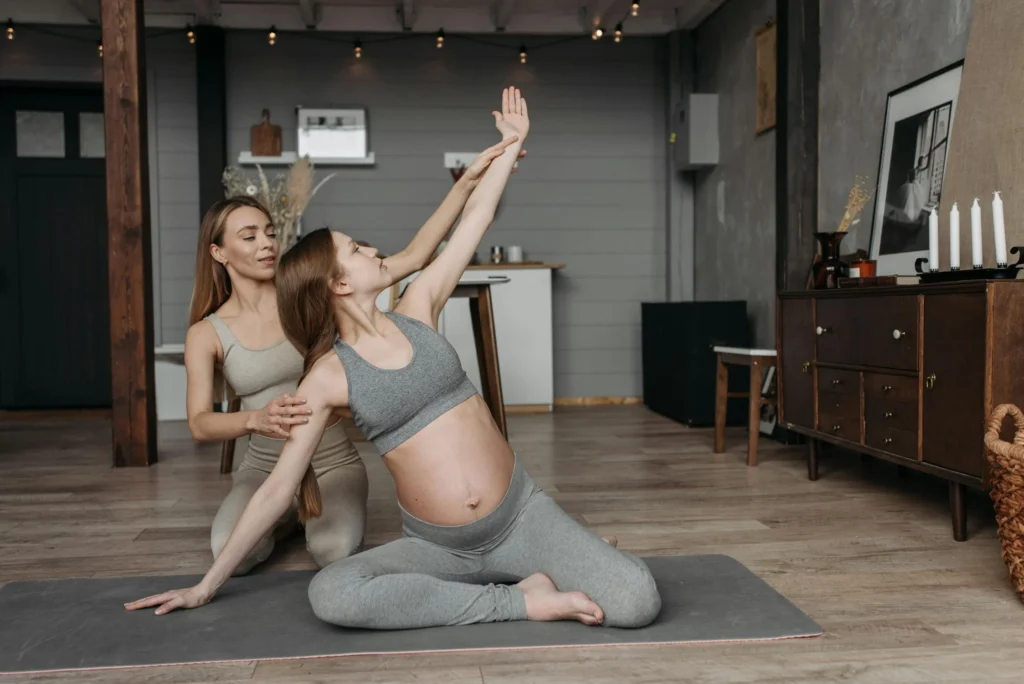
Breathing Techniques
Breathing techniques are essential during pregnancy. They help you stay calm and focused. Proper breathing also ensures your baby gets enough oxygen. Here are some simple techniques:
- Deep Belly Breathing: Sit comfortably with your back straight. Place one hand on your belly. Inhale deeply through your nose, letting your belly rise. Exhale slowly through your mouth. Repeat for a few minutes.
- Alternate Nostril Breathing: Sit in a comfortable position. Close one nostril with your thumb. Inhale deeply through the other nostril. Close the other nostril with your finger and release the first nostril. Exhale through the open nostril. Repeat, switching sides.
- 4-7-8 Breathing: Inhale deeply for 4 seconds, hold your breath for 7 seconds, and exhale slowly for 8 seconds. This technique calms your mind and helps you relax.
Practicing these breathing techniques can reduce anxiety and stress. They also prepare you for labor and delivery. Make them a part of your daily routine.
Second Trimester Focus
The second trimester of pregnancy is often considered the “golden period” of pregnancy. During this phase, many women experience a surge in energy and feel more comfortable compared to the first trimester. Practicing yoga during the second trimester can be highly beneficial. It helps in managing weight, reducing stress, and preparing the body for childbirth. This section will focus on two essential aspects: strengthening the core and hip openers. 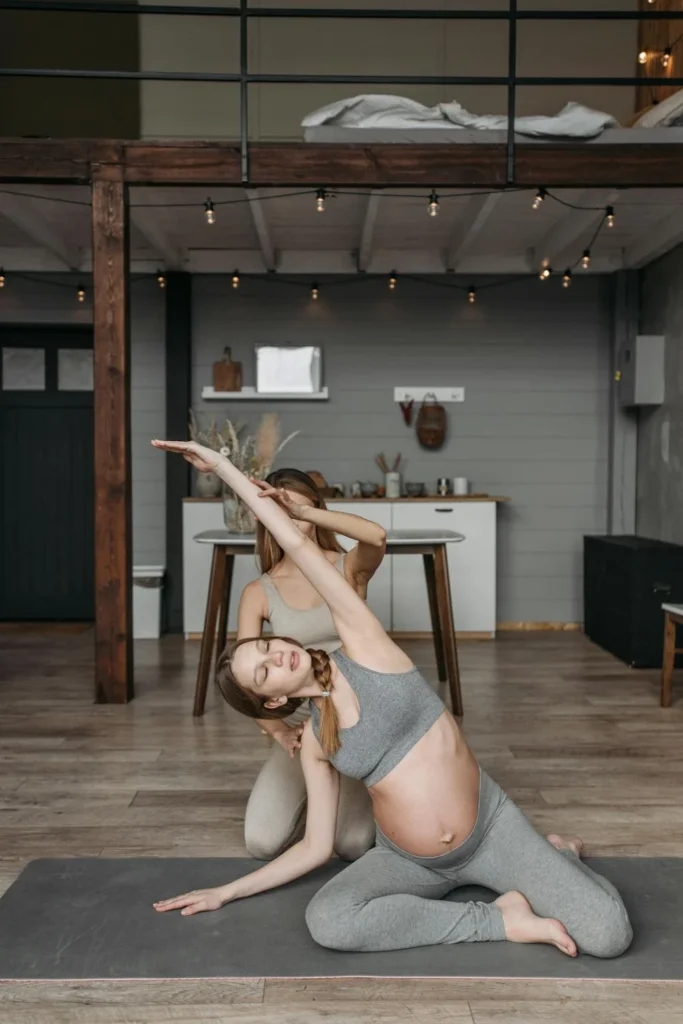
Strengthening Core
Maintaining a strong core is essential during pregnancy. A strong core supports the spine and helps in carrying the baby’s weight. Here are some safe and effective yoga postures for strengthening the core in the second trimester:
- Cat-Cow Pose (Marjaryasana-Bitilasana): This pose helps in gently strengthening the abdominal muscles while promoting spinal flexibility. To do this, get on all fours, alternate between arching your back (cow) and rounding it (cat).
- Modified Plank Pose: Traditional plank might be too intense, so modify by placing knees on the ground. This pose strengthens the core, arms, and shoulders.
- Bird-Dog Pose (Dandayamana Bharmanasana): This pose improves balance and strengthens the lower back and core. Extend one arm forward and the opposite leg back, keeping your back straight.
Here’s a table summarizing the benefits of each pose:
| Yoga Pose | Benefits |
|---|---|
| Cat-Cow Pose | Strengthens abdominal muscles, improves spinal flexibility |
| Modified Plank Pose | Strengthens core, arms, and shoulders |
| Bird-Dog Pose | Improves balance, strengthens lower back and core |
These poses are gentle and effective. Always listen to your body and avoid overstretching. Practicing these poses regularly can help you maintain a strong core throughout your pregnancy. 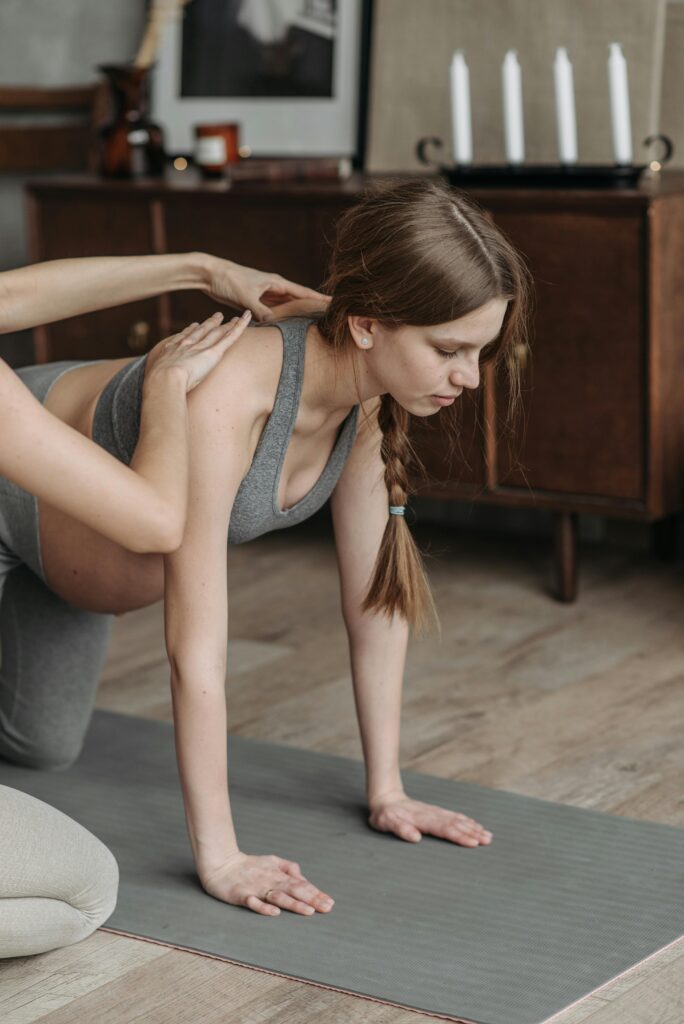
Hip Openers
Hip openers are vital in the second trimester. They help in preparing the body for childbirth and alleviate common pregnancy discomforts. Here are some beneficial hip-opening yoga postures:
- Butterfly Pose (Baddha Konasana): This pose gently opens the hips and stretches the inner thighs. Sit with feet together and knees bent outward, gently press knees towards the ground.
- Wide-Legged Child’s Pose (Balasana): This variation of Child’s Pose provides a gentle stretch to the hips. Kneel on the ground, separate knees wide, and sit back on your heels, extending arms forward.
- Garland Pose (Malasana): This deep squat helps in opening the hips and improving flexibility. Squat down with feet flat on the ground, bringing hands together in front of the chest.
Here’s a table summarizing the benefits of each pose:
| Yoga Pose | Benefits |
|---|---|
| Butterfly Pose | Opens hips, stretches inner thighs |
| Wide-Legged Child’s Pose | Gently stretches hips, provides relaxation |
| Garland Pose | Opens hips, improves flexibility |
Practicing these hip openers can ease tension and enhance flexibility in the pelvic region. It’s important to perform these poses slowly and mindfully. Regular practice can significantly aid in a smoother and more comfortable pregnancy journey.
Third Trimester Adjustments
During the third trimester, pregnant women need special adjustments in their yoga practice to ensure comfort and safety. As the baby grows, the body undergoes significant changes. This period requires specific modifications in yoga postures to accommodate the growing belly and provide relief from common third-trimester discomforts. 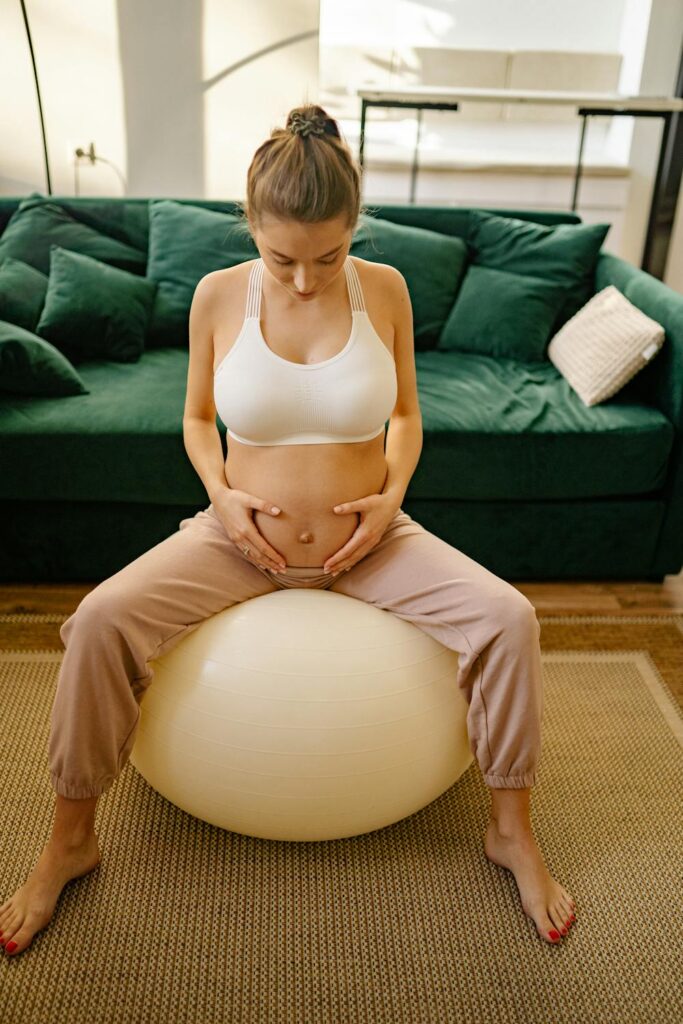
Comfortable Positions
Finding comfortable positions during yoga in the third trimester is essential. Here are some safe and soothing postures:
- Cat-Cow Stretch: This gentle flow helps relieve back pain. Start on all fours, arch your back on the inhale (Cow), and round it on the exhale (Cat).
- Child’s Pose: With knees wide apart, this pose provides a gentle stretch to the hips and lower back. Use a pillow under the belly for extra support.
- Supported Squat: Squatting with the support of a wall or yoga block helps open the pelvis. This position can also aid in preparing for labor.
Another great addition is the Butterfly Pose, which helps with hip flexibility. Sit with your feet together and gently press your knees towards the floor. Use pillows to support your knees if needed. Always listen to your body and avoid any positions that cause discomfort or strain.
| Posture | Benefits |
|---|---|
| Cat-Cow Stretch | Relieves back pain |
| Child’s Pose | Stretches hips and lower back |
| Supported Squat | Opens pelvis |
| Butterfly Pose | Improves hip flexibility |
Relaxation Techniques
In the third trimester, incorporating relaxation techniques into your yoga practice is crucial. These techniques help manage stress and prepare for childbirth. Here are some effective methods:
- Deep Breathing: Focus on slow, deep breaths. Inhale through the nose, filling your lungs completely, and exhale slowly. This helps calm the mind and reduces anxiety.
- Guided Meditation: Use apps or recordings for guided meditations. This practice helps in visualizing a calm and peaceful environment, aiding relaxation.
- Progressive Muscle Relaxation: Lie on your back and focus on tensing and then relaxing each muscle group. Start from the toes and work up to the head. This technique helps in releasing physical tension.
Another effective relaxation technique is Yoga Nidra or yogic sleep. This guided meditation practice involves lying in a comfortable position and following a script that guides you into a deep state of relaxation. It’s beneficial for both mental and physical relaxation.
Incorporating these techniques into your daily routine can help manage third-trimester discomforts and prepare your body and mind for childbirth. Always remember to consult with your healthcare provider before beginning any new exercise routine.

Credit: ozarkorthopaedic.com
Common Poses
Yoga is a wonderful way for pregnant women to stay healthy and calm. It helps with flexibility, strength, and relaxation. Common poses in yoga can be especially beneficial during pregnancy. These poses provide relief from common discomforts and prepare the body for childbirth.
Cat-cow Pose
The Cat-Cow Pose is a gentle way to warm up your spine. It helps improve flexibility and relieves back pain, which is common during pregnancy. This pose also encourages better posture and balance.
Here’s how to do the Cat-Cow Pose:
- Start on your hands and knees in a tabletop position.
- Ensure your wrists are directly under your shoulders and your knees under your hips.
- On an inhale, drop your belly towards the mat, lift your chin and chest, and gaze up towards the ceiling (Cow Pose).
- On an exhale, draw your belly to your spine and round your back towards the ceiling (Cat Pose).
- Repeat this movement for 5-10 breaths.
Benefits of Cat-Cow Pose:
- Improves spinal flexibility
- Relieves back pain
- Encourages better posture
- Promotes relaxation
Child’s Pose
The Child’s Pose is a restful pose that can be very soothing for pregnant women. It helps to stretch the hips, thighs, and ankles while reducing stress and fatigue. This pose is also great for relieving back and neck pain.
Here’s how to do the Child’s Pose:
- Start on your hands and knees in a tabletop position.
- Bring your big toes together and widen your knees apart.
- Sit back on your heels and lay your torso down between your thighs.
- Extend your arms forward with palms facing down or rest them alongside your body.
- Hold this pose for a few breaths or as long as comfortable.
Benefits of Child’s Pose:
- Stretches the hips, thighs, and ankles
- Relieves back and neck pain
- Reduces stress and fatigue
- Promotes relaxation and calmness
Mindfulness In Practice
Practicing yoga during pregnancy can offer tremendous benefits for both the body and the mind. One key aspect of prenatal yoga is mindfulness. Mindfulness helps expectant mothers connect deeply with their changing bodies and growing babies. It involves being present in each moment and can greatly enhance the overall yoga experience. 
Meditation Techniques
Meditation is a powerful tool for cultivating mindfulness. Expectant mothers can use different techniques to bring peace and awareness to their practice.
Here are some simple meditation techniques:
- Focused Breathing: Sit in a comfortable position. Close your eyes and breathe deeply. Focus on each breath as it enters and leaves your body. This helps calm the mind and reduce stress.
- Body Scan: Lie down comfortably. Close your eyes and slowly bring your attention to each part of your body. Start from your toes and move up to your head. Notice any tension and release it with each breath.
- Mantra Meditation: Choose a soothing word or phrase, like “peace” or “calm.” Sit comfortably, close your eyes, and repeat the mantra silently. This helps keep distracting thoughts at bay.
Incorporating these techniques into your daily routine can bring a sense of tranquility and focus. Practicing meditation can also help manage the physical and emotional changes during pregnancy.
Also Read: 8-Minute Workout: Yoga for Better Sleep
Visualization
Visualization is another powerful method to enhance mindfulness. It involves creating mental images to promote relaxation and positivity. 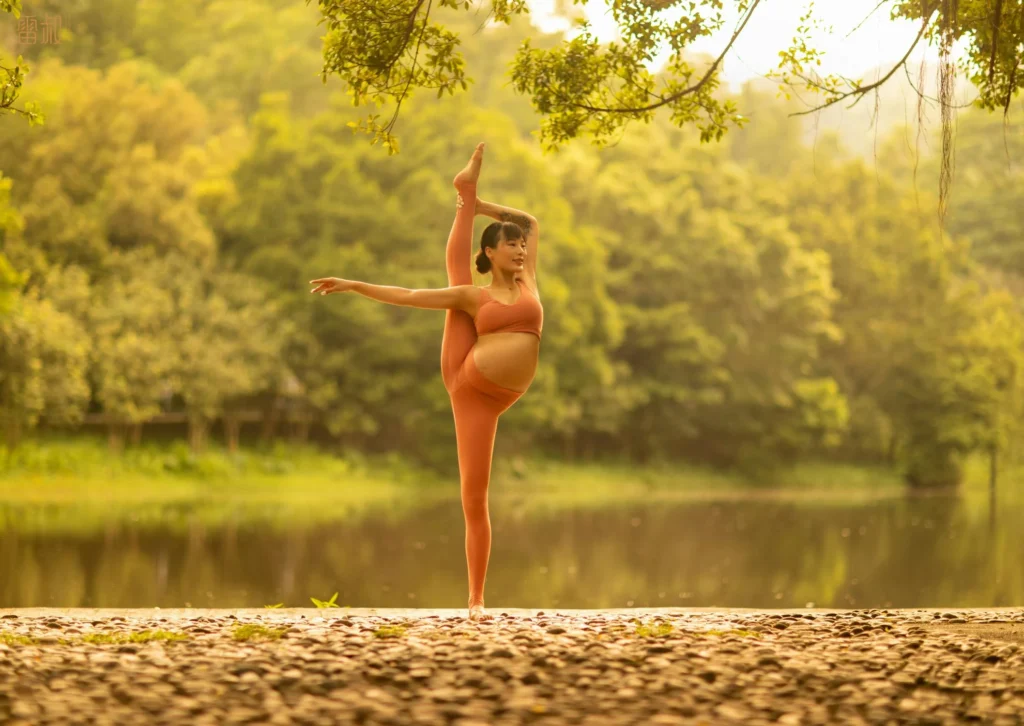
Here are some effective visualization exercises:
- Peaceful Place: Imagine a serene place where you feel safe and relaxed. It could be a beach, a forest, or your favorite room. Visualize every detail and immerse yourself in that peaceful environment.
- Connecting with Baby: Visualize your baby growing inside you. Imagine holding your baby in your arms. This can deepen the bond between you and your baby.
- Positive Birth: Visualize your ideal birth experience. Picture yourself calm and confident, surrounded by supportive people. This can help alleviate fears and build a positive mindset for childbirth.
Using visualization regularly can reduce anxiety and promote a positive outlook. It can also enhance the overall yoga practice, making it more meaningful and enjoyable.

Credit: vectorstock.com
Postpartum Yoga
Yoga postures for pregnant women offer numerous benefits, including improved flexibility, stress relief, and better sleep. After giving birth, postpartum yoga can be incredibly beneficial for new mothers. It helps to rebuild strength, connect with the baby, and promote overall well-being. This practice provides a gentle way to transition back into fitness while addressing the unique needs of a postpartum body.
Rebuilding Strength
Postpartum yoga focuses on rebuilding strength in a new mother’s body. Pregnancy and childbirth can weaken muscles, and yoga offers a gentle way to regain this strength.
Key areas to focus on include:
- Core Muscles: Gentle core exercises help strengthen abdominal muscles.
- Pelvic Floor: Postpartum yoga includes exercises that target pelvic floor muscles.
- Back Muscles: Strengthening back muscles helps improve posture and reduce pain.
Here are some beneficial yoga postures for rebuilding strength:
| Yoga Posture | Benefits |
|---|---|
| Cat-Cow Pose | Improves spine flexibility and strengthens back muscles. |
| Bridge Pose | Strengthens core and pelvic floor muscles. |
| Child’s Pose | Gently stretches the back and relieves tension. |
Practicing these postures regularly can help new mothers rebuild their strength gradually and safely.
Connecting With Baby
Postpartum yoga is not just about physical recovery; it also helps in connecting with your baby. Incorporating your baby into your yoga routine can be a wonderful bonding experience.
Here are some ways to connect with your baby during yoga:
- Baby Massage: Gently massaging your baby during yoga helps them relax and feel secure.
- Breastfeeding Breaks: Taking breaks to nurse your baby during your yoga session can strengthen your bond.
- Eye Contact: Making eye contact with your baby during poses ensures they feel included and loved.
Consider these baby-friendly yoga poses:
- Happy Baby Pose: Lie on your back and hold your baby above you, making eye contact and smiling.
- Seated Forward Bend: Sit with legs extended, place your baby on your legs, and bend forward to kiss or touch your baby.
- Modified Cobra Pose: Lie on your stomach, lift your upper body, and place your baby in front of you, engaging them with smiles and talk.
These activities not only enhance the physical benefits of yoga but also deepen the emotional connection between mother and child.

Frequently Asked Questions
Is Yoga Safe During Pregnancy?
Yes, yoga is generally safe during pregnancy. It helps with flexibility and relaxation. Always consult your doctor first.
What Yoga Poses Are Good For Pregnancy?
Gentle poses like Cat-Cow, Child’s Pose, and Warrior II are beneficial. They help in reducing back pain and stress.
Can Yoga Help With Labor Preparation?
Yes, yoga can prepare you for labor. It strengthens muscles and improves breathing techniques, aiding during childbirth.
How Often Should Pregnant Women Practice Yoga?
Pregnant women should practice yoga 3-4 times a week. Always listen to your body and rest when needed.
Conclusion
Practicing yoga during pregnancy can be beneficial and safe. Always consult with your healthcare provider first. Incorporate these gentle postures into your routine. They can help ease discomfort and prepare your body for childbirth. Stay mindful and listen to your body’s needs.
Embrace this journey with peace and relaxation.


